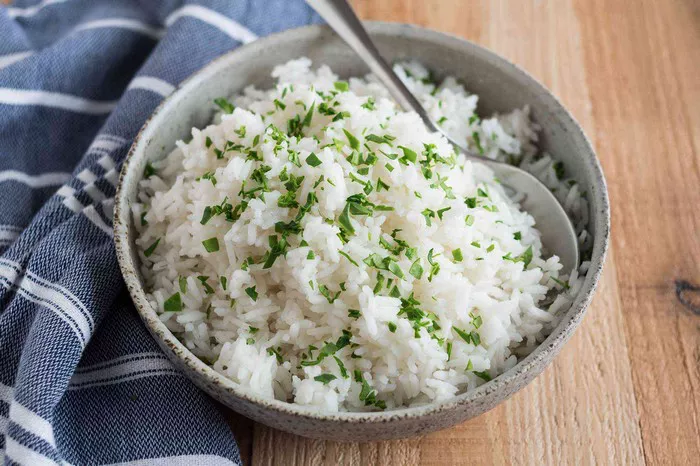Understanding Type 2 Diabetes and Diet
Type 2 diabetes is a condition characterized by insulin resistance, where the body’s cells do not respond effectively to insulin. This leads to elevated blood sugar levels (hyperglycemia), which, over time, can increase the risk of serious health complications such as heart disease, kidney disease, and nerve damage.
Diet plays a crucial role in managing type 2 diabetes. The goals of a diabetic-friendly diet include:
- Blood Sugar Control: Choosing foods that help maintain stable blood sugar levels throughout the day.
- Weight Management: Achieving and maintaining a healthy weight to improve insulin sensitivity.
- Heart Health: Protecting cardiovascular health by reducing the risk of high blood pressure, high cholesterol, and heart disease.
- Overall Nutritional Balance: Ensuring adequate intake of essential nutrients, vitamins, and minerals while limiting unhealthy fats, sodium, and added sugars.
Key Considerations for Choosing Healthy Cereal
When selecting a cereal suitable for individuals with type 2 diabetes, several factors should be taken into account:
- Carbohydrate Content: Carbohydrates directly impact blood sugar levels, so it’s important to choose cereals that are lower in carbs or have a moderate glycemic index (GI) to minimize spikes in blood glucose after meals.
- Fiber Content: Fiber helps slow down the absorption of sugar into the bloodstream, promoting better blood sugar control. Aim for cereals that are rich in dietary fiber.
- Sugar Content: Added sugars contribute to empty calories and can lead to rapid spikes in blood sugar levels. Opt for cereals that are low in added sugars or are unsweetened.
- Whole Grains: Whole grains provide more nutrients and fiber compared to refined grains. Look for cereals made with whole grains as the first ingredient.
- Protein Content: Protein helps increase satiety and can help stabilize blood sugar levels. Choosing cereals that contain some protein can be beneficial.
Healthy Cereal Options for Diabetics
Here are some examples of cereals that are generally considered healthy choices for individuals with type 2 diabetes, along with their nutritional profiles and considerations:
1. Whole Grain Cereals
Whole grain cereals are a good choice because they contain more fiber and nutrients compared to refined grain cereals. Look for options that list whole grains as the first ingredient on the label. Examples include:
- Oatmeal: Steel-cut oats or old-fashioned oats are excellent choices due to their high fiber content. Avoid pre-flavored oatmeal packets, which often contain added sugars.
- Whole Wheat Cereals: Some cereals made from whole wheat or bran flakes can be good options, provided they are low in added sugars and high in fiber.
2. High-Fiber Cereals
Fiber-rich cereals help slow down digestion and absorption of carbohydrates, which can help stabilize blood sugar levels. Aim for cereals that contain at least 3-5 grams of fiber per serving. Examples include:
- Bran Cereals: Bran flakes or bran buds are high in fiber and can be a good choice, but check the sugar content on the nutrition label.
- Psyllium Cereal: Cereals containing psyllium husk are very high in fiber and can help promote digestive health.
3. Low-Sugar Cereals
Reducing added sugars is crucial for managing blood sugar levels. Choose cereals that contain little to no added sugars. Options include:
- Plain Cheerios: These are low in sugar and made from whole grain oats, providing a good source of fiber.
- Shredded Wheat: Plain shredded wheat cereals are typically low in sugar and high in fiber. Avoid frosted or flavored varieties.
4. Low-Glycemic Index Cereals
Cereals with a low glycemic index (GI) are digested and absorbed more slowly, causing a slower rise in blood sugar levels. Examples include:
- Muesli: A Swiss-style cereal made from oats, nuts, seeds, and dried fruits. Choose varieties without added sugars.
- Quinoa Flakes: Quinoa flakes have a lower GI compared to some other cereals and are gluten-free.
5. Protein-Rich Cereals
Adding protein to breakfast can help stabilize blood sugar levels and promote satiety. Look for cereals that contain nuts, seeds, or added protein sources. Examples include:
- Kashi Go Lean Cereal: This cereal contains a mix of whole grains and soy protein, offering a good balance of fiber and protein.
- Special K Protein Cereal: A variety of Special K cereals are available with added protein to help keep you feeling full longer.
Tips for Incorporating Cereal into a Diabetic Diet
- Combine with Protein: Pair cereal with a source of protein, such as Greek yogurt or milk, to help balance blood sugar levels and increase satiety.
- Watch Portion Sizes: Stick to recommended serving sizes to avoid consuming too many carbohydrates in one sitting.
- Add Fresh Fruit: Include fresh fruits like berries or sliced apples to add natural sweetness and additional fiber to your cereal.
- Read Labels Carefully: Always check the nutrition label for carbohydrate, fiber, and sugar content. Avoid cereals with high sugar content or refined grains.
See also: What Is Metformin HCL Used to Treat?
Conclusion
Choosing a healthy cereal for individuals with type 2 diabetes involves considering factors such as carbohydrate and fiber content, sugar levels, and overall nutritional value. By opting for cereals that are high in fiber, low in added sugars, and made from whole grains, individuals can help manage their blood sugar levels effectively and support overall health. Incorporating cereal into a balanced diabetic diet, alongside protein and fresh fruits, can provide a satisfying and nutritious breakfast option. Consulting with a dietitian or healthcare provider can provide personalized recommendations based on individual health needs and preferences. With informed choices and mindful eating habits, cereal can be a delicious and beneficial part of managing type 2 diabetes.
Related topics:
What Can I Do to Prevent Type 2 Diabetes?


























